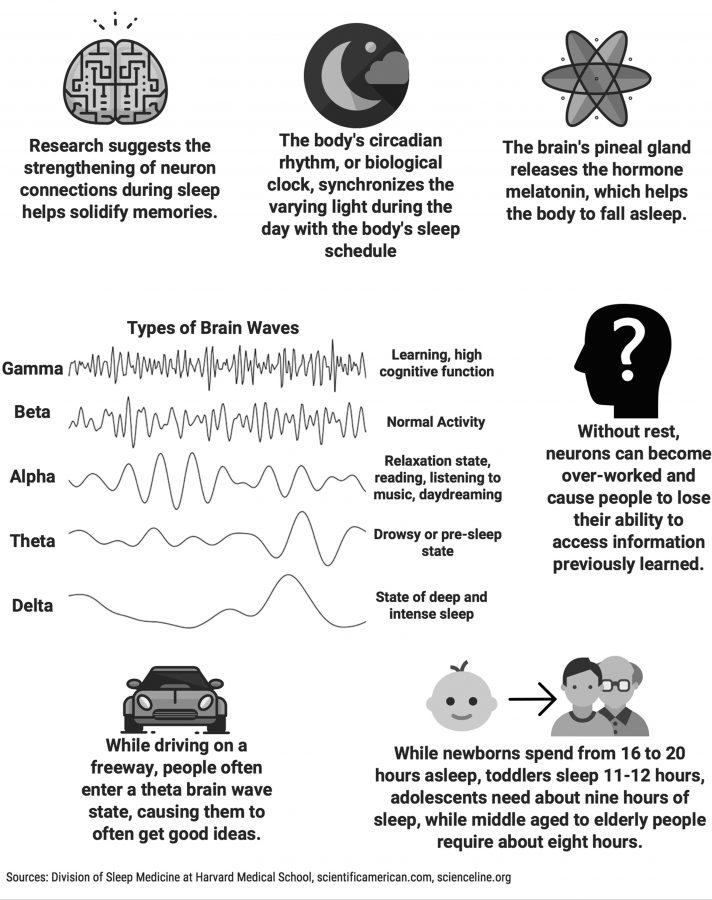The science of sleep deprivation and technology’s influence
Credit: Georgia Panitz
November 22, 2016
How harmful sleep cycles are formed and ways they can be broken
Unfortunately, due to overloaded schedules and immense homework, students often fall into a self-harming sleep cycle that can be very difficult to break.
It only takes one late night to disrupt one’s sleep pattern. Several late nights throughout the week are harmful and can lead to excessive sleep on the weekends, which can further disrupt one’s sleep cycle. Poorly planned naps, too late in the day or too long, combined with the effects of technology’s blue light before bed can also affect one’s biological clock.
Luckily, there are many ways to get one’s sleep schedule back on track. Bedtime should be roughly 7-8 hours before your morning alarm. To help reset your biological clock make sure you have a healthy sleep environment, keep a consistent sleep schedule, and avoid eating food or consuming caffeine 2-3 hours before sleep. A bedtime routine such as taking a shower or reading a book can calm your body in preparation for sleep.
Naps are a good way to boost your energy, and should be limited to about 20-30 minutes. Napping for more than 30 minutes can interfere with nighttime sleep. While it may appear that naps result in increased fatigue, this grogginess lasts no more than a half hour.
Unhealthy sleep schedules result in anything from drowsiness and inability to focus and retain information, to long term effects such as insomnia and weight gain.
New phone settings can help you sleep better
If you could reduce your risk of heart disease, certain cancers, weight gain, Alzheimer’s, and more would you? Well, that seemingly magical button exists. It’s free. It’s Apple’s Night Shift mode.
Night Shift mode is a feature introduced in iOS 9.3 that moves the color temperature of the display towards the warmer end of the spectrum. This gives the screen a yellower appearance, reduces the amount of blue light that is emitted.
Blue light is a lower wavelength of light, while reds are higher. Night Shift mode decreases the amount of low wavelength(blue) frequencies of light. This lower frequency light is associated with a decrease in the production of melatonin, disrupting the circadian rhythm and decreasing the amount of sleep.
Decreased sleep is associated with increased risk of heart disease, certain cancers, weight gain, Alzheimer’s and diabetes. Getting more sleep also improves your mood and ability to learn. Simply by using Night Shift mode, one can potentially get more sleep and gain the many health benefits associated with sleep.
F.lux is an alternative Night Shift mode that reduces blue light. Unlike Night Shift mode, F.lux has three settings that adjust the color of the screen over time to mimic the rise and set of the sun. It has daytime mode, which has no blue light reduction, and a bedtime mode, which has significant blue light reduction. Between those two modes is sunset mode. It is a subtler reduction of blue light for when the sun has set, but the lights are still on, and the user is not quite ready to go to sleep. F.lux is downloadable software for most computers, including Apple as well as Android phones.

